Lindy Beauvais
Jenika pierre
The Case Of The Stratton Brothers
On March 27,1905 Thomas Farrow, age 71, heard a knock at his door of his business(Chapman's oil and colour shop) he then saw two men who looked as if they were trying to buy supply of paint and brushes.
Fingerprints on soft surfaces are likely to be three-dimensional plastic prints
those on hard surfaces are either patent (visible) or latent (invisible) prints
Visible prints are formed when blood, dirt, ink, paint, etc., is transferred from a finger or thumb to a surface.
Patent prints can be found on a wide variety of surfaces: smooth or rough, porous (such as paper, cloth or wood) or nonporous (such as metal, glass or plastic).
Fingerprints can be found on practically any solid surface, including the human body. Analysts classify fingerprints into three categories according to the type of surface on which they are found and whether they are visible or not
- Thomas farrow soon realized that they were actually after his money in his cash box. he tried to resist but they proceeded to hit him in the head with a crossbar about half-dozen times.

- the Stratton brothers then went upstairs to find the cash box.
- the cash box contained less then $15
They murdered both Thomas and Anne Farrow during the process of looking for the cash box
Evidence found:
- Two Black Masks
- Two Separate pools of blood around body
- Blood found in a basin
- Empty cash box with a greasy fingerprint
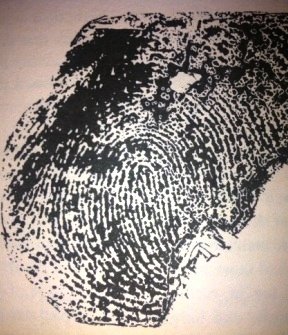
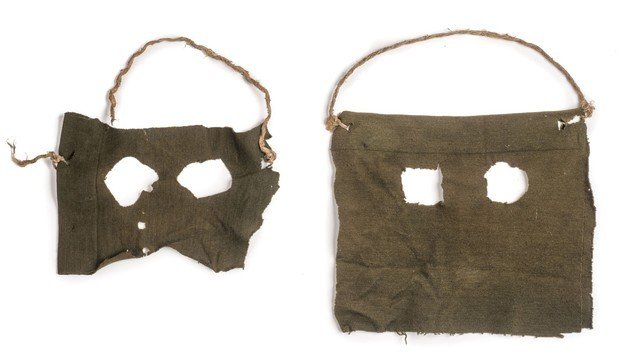
Witness report:
People saw two men leaving the shop after the crime and all the descriptions given by the witnesses was very similar. a local milkman was able to identify the brothers.
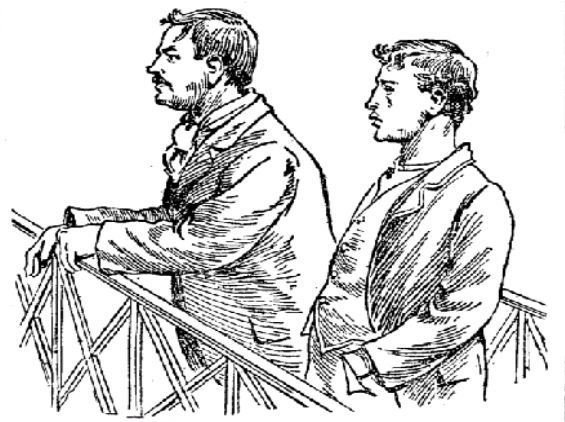
Suspect name:
Alfred Edward Stratton(22)
Albert Ernest Stratton(20)
Alfred's girlfriend reported that he discarded his suit, borrowed her stocking and found large unexplained amounts of money.
Alfred and Albert tried to blame it on each other but both were found guilty and sentenced to death.
The fingerprint they found on the cash box was an exact match of Alfred fingerprints.
- arched fingerprint
- 11 points
- enough to be convicted
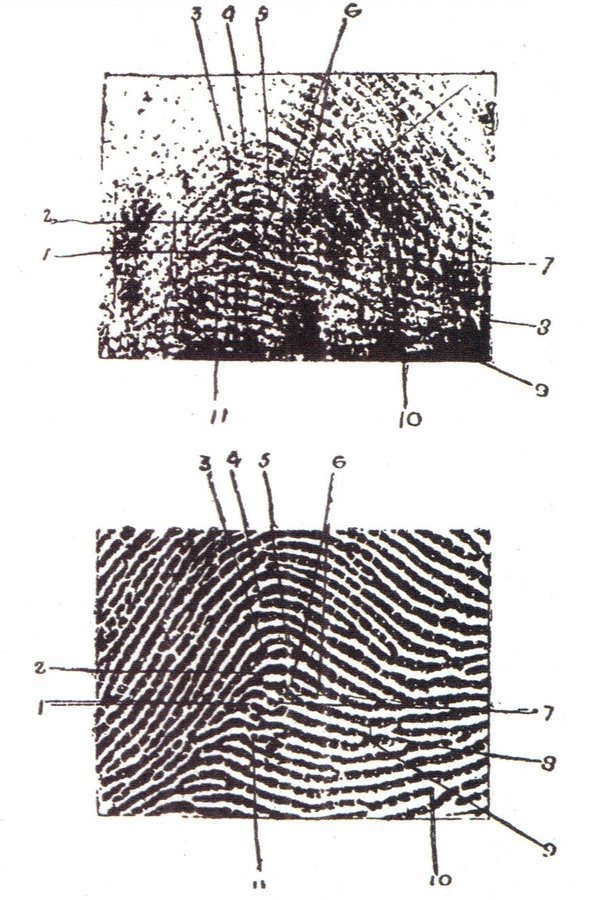
Fingerprints come in different ways.
°Arch
°Whirl
°Double loop
°Simple
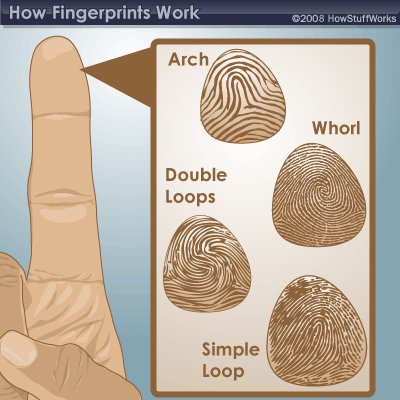
Fingerprints and DNA -are the holy grail of criminal prosecution for an obvious reason: they are nearly impossible for a suspect to refute.
ARCH is found among 5% of fingerprint pattern so its really. Rare to encounter. There are two type of arch: plain arch and tented arch.
the difference in the tented arch is ridges in the center they are not continuous as in the plain arch. The ridges converge and thrust upward, giving the look of a pitched tent.
TENTED ARCH

Plain arches have an even flow of ridges from one side of the impression to the other. The plain arch rises at the center with a wave.
PLAIN ARCH
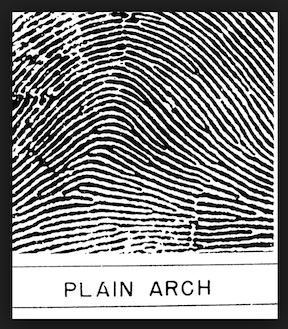
Loops
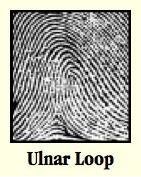
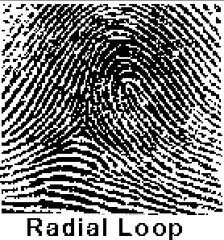
Loops occur in about 60-70% of fingerprint patterns encountered. One or more of the ridges enters on either side of the impression, re-curves, touches or crosses the line running from the delta to the core and terminates on or in the direction of the side where the ridge or ridges entered.
Ulnar loop

Ulnar loops are named after the ulna, a bone in the forearm. The ulna is on the same side as the little finger and the flow of the pattern in a ulnar loop runs in the direction of the ulna.
Radial loop

Radial loops are named after the radius, a bone in the forearm that joins the hand on the same side as the thumb. The flow of the pattern in radial loops runs in the direction of the radius (toward the thumb). Radial loops are not very common and most of the time radial loops will be found on the index fingers.
Whorl

Whorls are seen in about 25-35 % of fingerprint patterns encountered. In a whorl, some of the ridges make a turn through at least one circuit. Any fingerprint pattern which contains 2 or more deltas will be a whorl pattern.
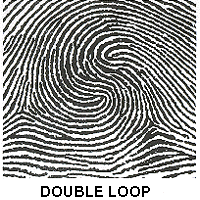

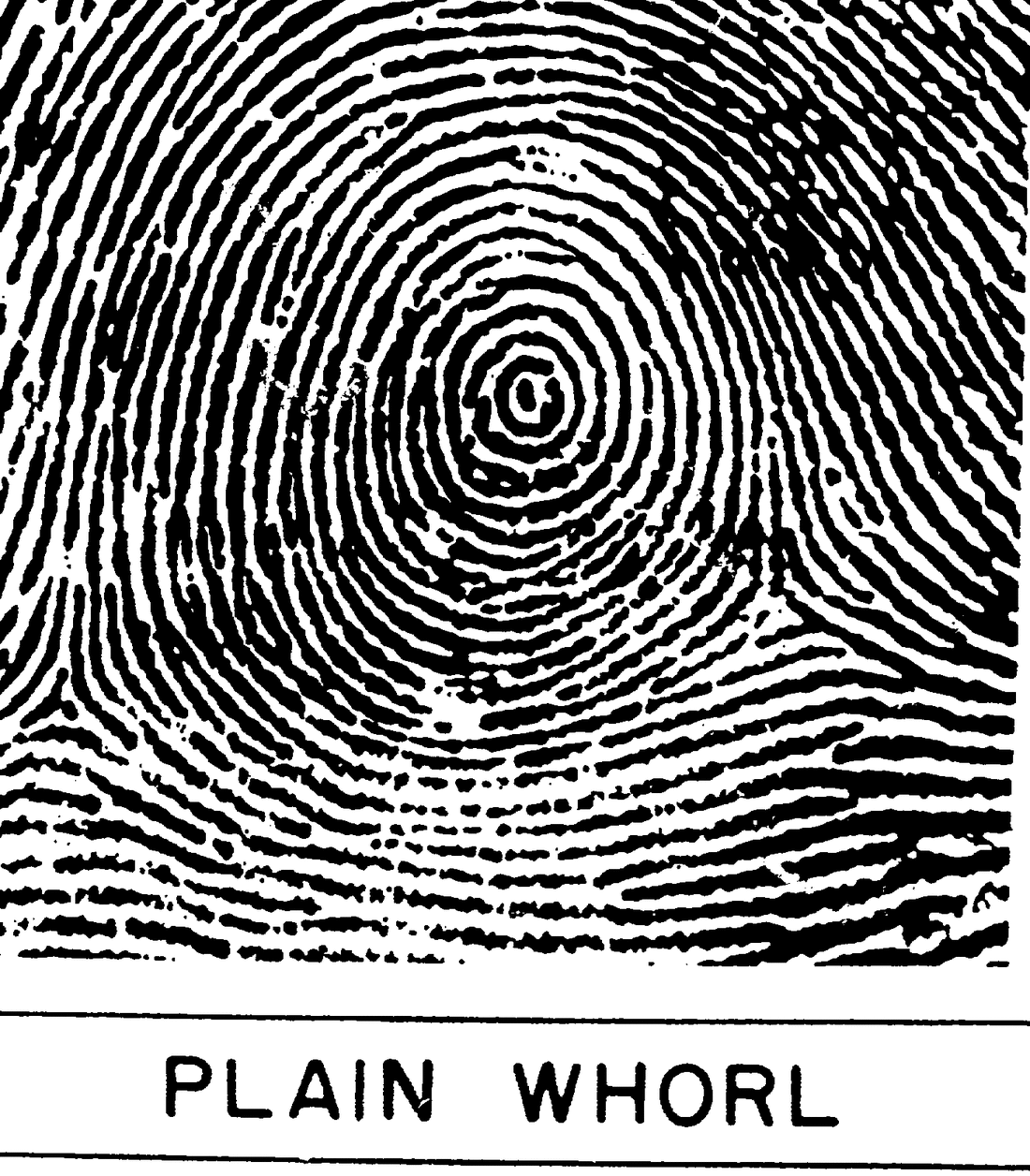
Plain whorl
Plain whorls consist of one or more ridges which make or tend to make a complete circuit with two deltas, between which an imaginary line is drawn and at least one re-curving ridge within the inner pattern area is cut or touched.

Central pocket loop whorl
Central pocket loop whorls consist of at least one re-curving ridge or an obstruction at right angles to the line of flow, with two deltas, between which when an imaginary line is drawn, no re-curving ridge within the pattern area is cut or touched.

Double loop whorl
Double loop whorls consist of two separate and distinct loop formations with two separate and distinct shoulders for each core, two deltas and one or more ridges which make, a complete circuit.

Accidental Whorl
Accidental whorls consist of two different types of patterns with the exception of the plain arch, have two or more deltas or a pattern which possess some of the requirements for two or more different types or a pattern which conforms to none of the definitions.

Fingerprints modern use
- Fingerprints are used to identify an unknown victim, witness, or suspect, to verify records, and most importantly, as links and matches between a suspect and a crime.
- Fingerprint Databases. Automated Fingerprint Identification System, or AFIS, is a database of fingerprints taken and stored in the United States, though other countries such as Canada and the United Kingdom also have their own AFIS. The prints may have been taken for a number of reasons, and the system is used for a variety of purposes, including criminal identification, receipt of benefits, background checks, and receipt of credentials.
http://www.dailymotion.com/video/x2hhth5
https://www.youtube.com/watch?v=IrpTqKkgygA
https://www.youtube.com/watch?v=MAfAVGES-Yc
Bibliography
http://aboutforensics.co.uk/the-stratton-brothers/
http://www.history.com/this-day-in-history/fingerprint-evidence-is-used-to-solve-a-british-murder-case
deck
By lindybeauvais
deck
- 667
